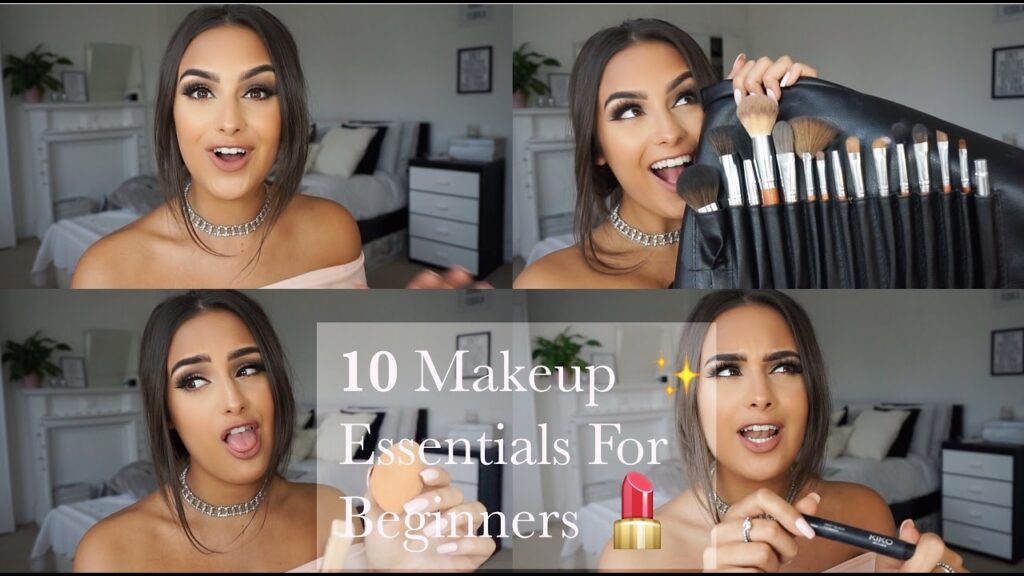Makeup can be a game-changer for enhancing natural beauty, boosting confidence, and allowing creative expression. However, for beginners, it can feel overwhelming due to the numerous products, techniques, and trends. If you’re just starting, mastering a few fundamental tips can make your makeup routine smoother and more effective. Here are 10 must-know makeup tips for beginners to help you achieve a flawless look effortlessly.

1. Start with a Clean and Moisturized Face
Before applying any makeup, ensure your skin is clean and hydrated. A well-prepped base makes all the difference in how your makeup applies and lasts throughout the day. Follow these steps:
- Cleanse your face using a gentle face wash suitable for your skin type.
- Apply a lightweight moisturizer to keep your skin hydrated and prevent dryness.
- Use sunscreen (SPF 30 or higher) during the day to protect your skin from UV damage.
- Allow your skincare products to absorb before applying makeup to avoid pilling.
2. Choose the Right Foundation Shade
One of the most common beginner mistakes is using the wrong foundation shade. To find your perfect match:
- Test foundation shades on your jawline rather than your hand.
- Check how it looks in natural light.
- If you’re unsure, opt for a foundation with neutral undertones or visit a makeup store for a shade-matching consultation.
- Consider using a lightweight BB cream or tinted moisturizer for a natural look if you’re not ready for full coverage.
3. Use Primer for a Smooth Base
Primer acts as a barrier between your skin and makeup, helping your foundation last longer and appear smoother. If you have oily skin, use a mattifying primer. For dry skin, choose a hydrating primer. A pea-sized amount is enough—focus on areas where makeup tends to crease, such as the T-zone and under the eyes.
4. Blend, Blend, Blend
Blending is key to achieving a natural and seamless makeup look. Whether you’re applying foundation, concealer, blush, or eyeshadow, always take time to blend properly:
- Use a damp beauty sponge for a dewy, airbrushed effect.
- A brush works best for medium to full coverage application.
- Blend in circular motions and make sure there are no harsh lines.
5. Conceal Dark Circles and Blemishes Correctly
Concealer is your best friend for covering dark circles, blemishes, and redness. To get the best results:
- Use a shade slightly lighter than your skin tone for brightening the under-eye area.
- Apply in a triangular shape under the eyes to lift and brighten.
- For blemishes, use a concealer that matches your foundation shade exactly.
- Set with a light dusting of translucent powder to prevent creasing.
6. Set Your Makeup with Powder
To prevent your makeup from sliding off, especially if you have oily skin, set it with powder:
- Use a translucent setting powder for a lightweight, natural finish.
- Apply it to areas prone to oiliness, such as the T-zone (forehead, nose, chin).
- Avoid over-powdering to prevent a cakey look.
7. Define Your Brows
Eyebrows frame the face and can make a huge difference in your overall look. If you’re new to brow makeup:
- Choose a brow pencil, powder, or gel that matches your natural brow color.
- Use light, hair-like strokes to fill in sparse areas.
- Brush through with a spoolie to blend the product for a natural appearance.
- Avoid over-darkening your brows, as it can make them look unnatural.
8. Master Basic Eye Makeup
Eye makeup can be tricky for beginners, but starting simple is the key:
- Stick to neutral eyeshadows like brown, beige, or taupe for an everyday look.
- Blend your eyeshadow well to avoid harsh lines.
- Use a pencil or gel eyeliner to define your lash line. Beginners should start with brown or black for a softer look.
- Curl your lashes and apply mascara to open up your eyes.
9. Apply Blush and Highlighter for a Healthy Glow
Blush adds warmth to your complexion, while highlighter gives a radiant glow. To apply them correctly:
- Smile and apply blush to the apples of your cheeks, blending towards the temples.
- Use a highlighter on the high points of your face: cheekbones, the bridge of the nose, and cupid’s bow.
- Stick to subtle shades like peach or pink for a natural flush.
- If you have oily skin, opt for a powder blush; for dry skin, cream blushes work best.
10. Choose the Right Lip Color
Lip color can enhance your entire makeup look. Here’s how to choose and apply it effectively:
- Start with a lip balm to keep your lips hydrated.
- Outline your lips with a lip liner to define their shape and prevent feathering.
- Apply lipstick or lip gloss in a shade that complements your skin tone.
- Nude and soft pinks are great for beginners, while bold reds and deep shades can be experimented with over time.
Bonus Tips:
- Always remove your makeup before bed to prevent clogged pores and breakouts.
- Clean your makeup brushes regularly to maintain hygiene and avoid skin irritation.
- Less is more! Start with minimal makeup and build it up as you gain confidence.
Conclusion
Makeup doesn’t have to be intimidating. By following these beginner-friendly tips, you can build a solid foundation for creating beautiful, effortless looks. With practice and patience, you’ll gain the confidence to experiment and develop your own unique style. Whether you’re preparing for a casual day out or a special occasion, these makeup tips will ensure you always put your best face forward

